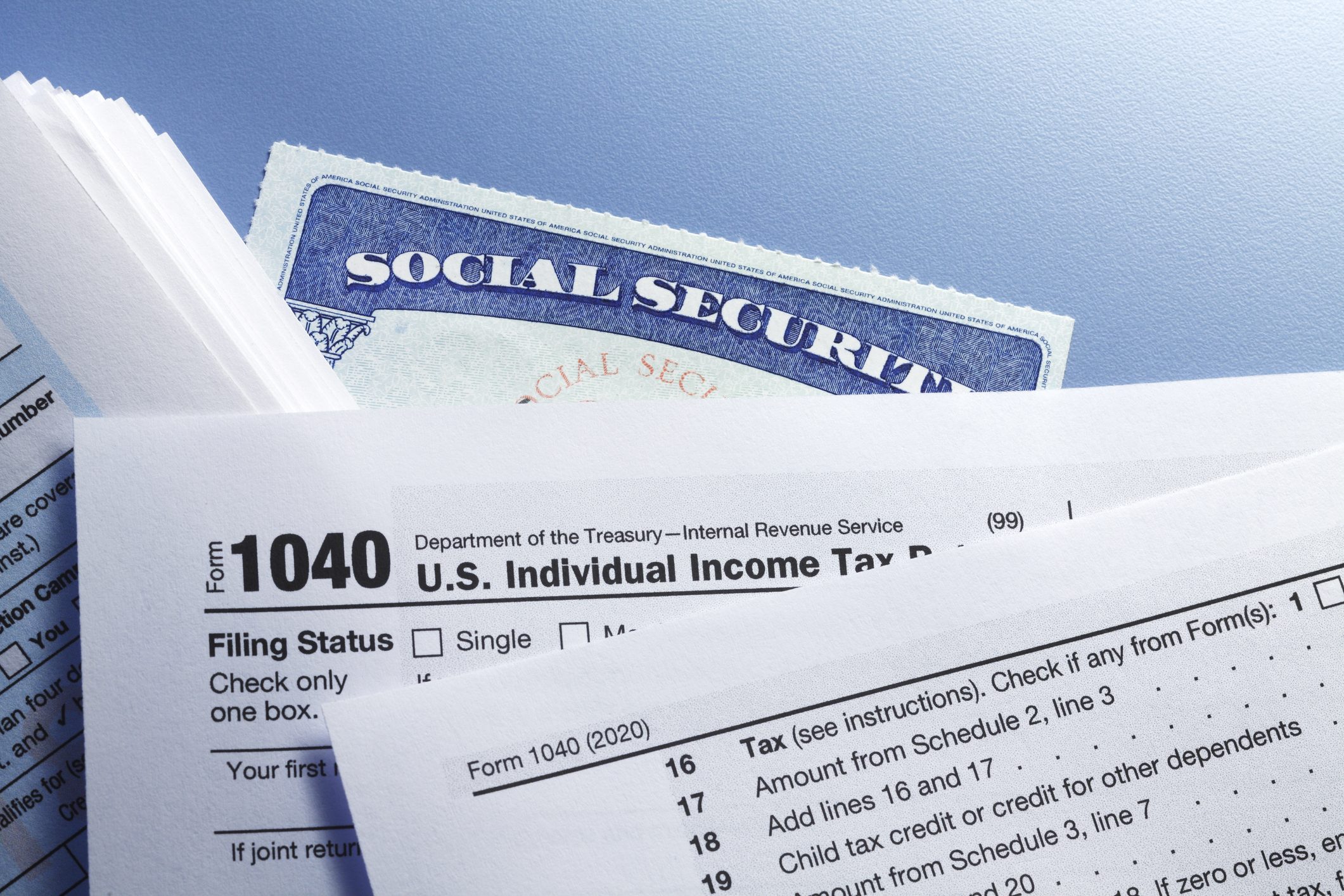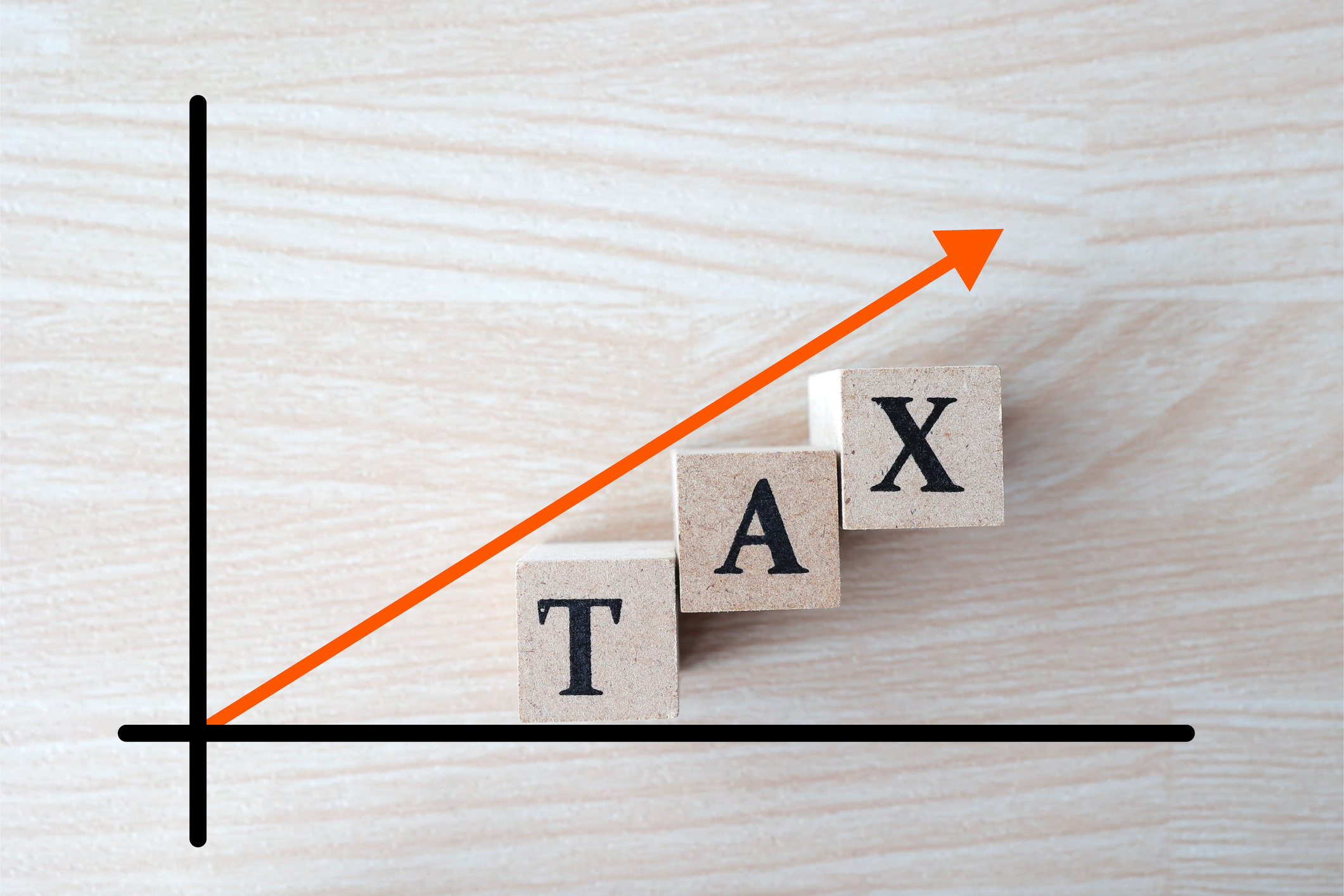How to Calculate Taxes on Social Security Benefits in 2025
The federal government can tax up to 85% of your Social Security benefits, so it's good to know how those taxes are calculated.


It may come as a surprise, but Social Security benefits are not entirely tax-free. Depending on your income, up to 85% of your Social Security benefits can be subject to tax. That includes retirement and benefits from Social Security trust funds, like survivor and disability benefits, but not Supplemental Security Income (SSI).
The chance of paying taxes on your Social Security benefits is higher when you have significant taxable income from a job, pension, or traditional IRA, for example.
However, many people who only have income from Social Security don’t pay income taxes on their benefits at the federal level.

Sign up for Kiplinger’s Free E-Newsletters
Profit and prosper with the best of expert advice on investing, taxes, retirement, personal finance and more - straight to your e-mail.
Profit and prosper with the best of expert advice - straight to your e-mail.
Still, since like other forms of retirement income taxed by the IRS, taxes on Social Security benefits are a possibility for retirees, it’s important to know how Social Security taxes are calculated.
Related: At What Age Are Social Security Benefits No Longer Taxed?
How to calculate tax on Social Security benefits
Each January, after you begin receiving Social Security benefits, you will receive a statement (Form SSA-1099) showing the total benefits you received in the previous year.
When determining how much you may be taxed, the first step is to calculate your "combined income."
The IRS says your combined income is your adjusted gross income (AGI) plus nontaxable interest and half of your Social Security benefits from the year. You then take away certain deductions and exclusions.
The following tiered system determines the percentage of your benefits that are taxable.
- If your combined income is under $25,000 (single) or $32,000 (joint filing), there is no tax on your Social Security benefits.
- For combined income between $25,000 and $34,000 (single) or $32,000 and $44,000 (joint filing), up to 50% of benefits can be taxed.
- With combined income above $34,000 (single) or above $44,000 (joint filing), up to 85% of benefits can be taxed.
If you need clarification on whether your Social Security benefits are taxable, the IRS has a tool on its website that can help.
Once you know how much of your benefits are taxable, you must include that amount on Line 6b of Form 1040.
That income will be taxable, along with any other income, based on your tax bracket and the income tax rate tied to it.
Tax on lump-sum payment from Social Security
When calculating taxes on your Social Security benefits, you should include the taxable portion of any lump-sum payment you received during the year. (That is true even if that payment includes benefits from a previous year.)
However, the inclusion might lower the taxable portion of your benefits. In that case, the IRS says you can elect to figure the taxable part of a lump-sum payment for an earlier year separately, using your income for the previous year.
Note: Lump-sum retirement benefits differ from lump-sum death benefits. It's important to note that no part of a lump-sum death benefit paid by the Social Security Administration (SSA) is taxable.
How to withhold taxes from Social Security payments
It's important to plan if you know some of your Social Security benefits will be taxed. To avoid surprises, you can request that federal income taxes be withheld from your monthly payments.
- To do this, you must fill out Form W-4V and submit it to your local Social Security office.
- You can choose a withholding rate of 7%, 10%, 12%, or 22%.
- Withholding taxes from your Social Security payments is one way to cover your potential tax liability before Tax Day arrives.
If you prefer not to have taxes deducted from your monthly Social Security payments, you can make quarterly estimated tax payments. Regardless of the method, the goal is to ensure you have paid enough tax to avoid an underpayment penalty from the IRS when you file your income tax return.
State tax on Social Security benefits
In addition to federal taxes, some states tax Social Security benefits. However, the methods and extent of taxation vary.
For example, New Mexico technically taxes Social Security benefits, but many retirees will not pay a dime to the state on that income at tax time. That’s because recently passed state legislation provides higher income thresholds in New Mexico for exempting Social Security benefits.
Also, West Virginia is completely phasing out its tax on Social Security benefits by 2026. The move, initiated by legislation passed in March 2024, represents a significant policy shift. Some proponents say it will make West Virginia more attractive to retirees and ease the financial burden on its aging population.
(For more information, see Taxes on Social Security: Two States Make Big Changes for 2025.)
Although you cannot have state taxes withheld from Social Security benefits, you might be able to make estimated state tax payments.
Contact your state Department of Revenue for information about your state's estimated tax payment rules.
Related Content
Get Kiplinger Today newsletter — free
Profit and prosper with the best of Kiplinger's advice on investing, taxes, retirement, personal finance and much more. Delivered daily. Enter your email in the box and click Sign Me Up.

As the senior tax editor at Kiplinger.com, Kelley R. Taylor simplifies federal and state tax information, news, and developments to help empower readers. Kelley has over two decades of experience advising on and covering education, law, finance, and tax as a corporate attorney and business journalist.
-
 How Much Will Car Prices Go Up With Tariffs?
How Much Will Car Prices Go Up With Tariffs?Tariffs could drive car prices up even higher, for new and used cars, as well as for American brands.
By Jim Patterson
-
 A QLAC Does So Much More Than Simply Defer Taxes
A QLAC Does So Much More Than Simply Defer TaxesHere are the multiple ways you can use a QLAC, from managing retirement risks to creating income for specific retirement needs and wants.
By Jerry Golden, Investment Adviser Representative
-
 Which Generation Pays the Most Taxes in the U.S.?
Which Generation Pays the Most Taxes in the U.S.?Tax Burden Polls show that most people feel like taxes are unfair. But which age group bears the brunt of the tax burden in the United States?
By Kelley R. Taylor
-
 Tax Day 2025: Don’t Miss These Freebies, Food Deals and Discounts
Tax Day 2025: Don’t Miss These Freebies, Food Deals and DiscountsTax Day You can score some sweet deals on April 15 in some select restaurants like Burger King, Shake Shack, and more.
By Gabriella Cruz-Martínez
-
 Tax Time: Does Your Kid Influencer Owe Taxes?
Tax Time: Does Your Kid Influencer Owe Taxes?State Tax Some minors are making big money on social media. Here’s how to know if they need to file taxes.
By Gabriella Cruz-Martínez
-
 Free IRS Tax Filing for 30 Million People: Will It Continue Under Trump?
Free IRS Tax Filing for 30 Million People: Will It Continue Under Trump?Tax Filing Direct File was piloted last year in 12 states and has since expanded to 25. But some wonder whether the program will last under the Trump administration.
By Gabriella Cruz-Martínez
-
 How Caregivers for Adults Can Save on Taxes in 2025
How Caregivers for Adults Can Save on Taxes in 2025Tax Breaks Caring for your parent or spouse can be stressful, but the IRS offers tax breaks for qualifying taxpayers. Here they are.
By Kate Schubel
-
 U.S. Treasury to Eliminate Paper Checks: What It Means for Tax Refunds, Social Security
U.S. Treasury to Eliminate Paper Checks: What It Means for Tax Refunds, Social SecurityTreasury President Trump signed an executive order forcing the federal government to phase out paper check disbursements by the fall.
By Gabriella Cruz-Martínez
-
 IRS Layoffs Spark Delays, Doubt This Tax Season
IRS Layoffs Spark Delays, Doubt This Tax SeasonTax Season Tax experts say Trump’s downsizing of the IRS is already causing problems.
By Gabriella Cruz-Martínez
-
 States with the Highest Income Tax Rates for Retirees
States with the Highest Income Tax Rates for RetireesState Tax You may reconsider living and retiring in one of these states due to high taxes.
By Kate Schubel